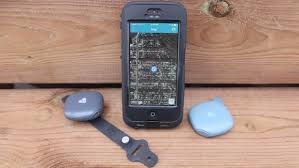
Breaking News
We Americans Need to Dig Deep into Historical Perspective
 A timeless clip of Michael Burry explaining how he used credit default swaps...
A timeless clip of Michael Burry explaining how he used credit default swaps...
 The next financial crisis won't start in a bank lobby. It's already brewing in the market
The next financial crisis won't start in a bank lobby. It's already brewing in the market
Top Tech News
 This tiny dev board is packed with features for ambitious makers
This tiny dev board is packed with features for ambitious makers
 Scientists Discover Gel to Regrow Tooth Enamel
Scientists Discover Gel to Regrow Tooth Enamel
 Vitamin C and Dandelion Root Killing Cancer Cells -- as Former CDC Director Calls for COVID-19...
Vitamin C and Dandelion Root Killing Cancer Cells -- as Former CDC Director Calls for COVID-19...
 Galactic Brain: US firm plans space-based data centers, power grid to challenge China
Galactic Brain: US firm plans space-based data centers, power grid to challenge China
 A microbial cleanup for glyphosate just earned a patent. Here's why that matters
A microbial cleanup for glyphosate just earned a patent. Here's why that matters
 Japan Breaks Internet Speed Record with 5 Million Times Faster Data Transfer
Japan Breaks Internet Speed Record with 5 Million Times Faster Data Transfer
 Advanced Propulsion Resources Part 1 of 2
Advanced Propulsion Resources Part 1 of 2
 PulsarFusion a forward-thinking UK aerospace company, is pushing the boundaries of space travel...
PulsarFusion a forward-thinking UK aerospace company, is pushing the boundaries of space travel...
 Dinky little laser box throws big-screen entertainment from inches away
Dinky little laser box throws big-screen entertainment from inches away
 'World's first' sodium-ion flashlight shines bright even at -40 ºF
'World's first' sodium-ion flashlight shines bright even at -40 ºF
Review: Findster Duo Plus offers fee-free GPS pet-tracking

The less-expensive Bluetooth devices are attached to the dog's collar, with an app subsequently showing the user which direction to go in order to find the animal. Unfortunately, though, these devices have quite a short range – usually no more than about 200 ft (61 m).
GPS pet-trackers also get attached to the collar, then proceed to continuously acquire and transmit their geographical coordinates via a cellular signal. Utilizing an app, users can track the location of their dog from anywhere there's coverage. The downside, however, is that monthly data fees are required.
The Findster system is likewise GPS-based, although it requires no cellular service. Along with an iOS/Android app, it consists of a collar-worn Pet module, and a Guardian module which the user carries with them. Utilizing the company's MAZE technology, the Pet module independently acquires its GPS coordinates, but then uses an ISM-band radio signal to continuously transmit that data to the Guardian. That module in turn uses Bluetooth to relay the information to the app.
On that app, users see the relative locations of the Guardian and the Pet modules on a satellite map of the area – in other words, the locations of themselves and their dog. They can then set out to reclaim their critter, with the positions of the modules being updated on the map as both parties move around.

 The AI money machine!
The AI money machine!

